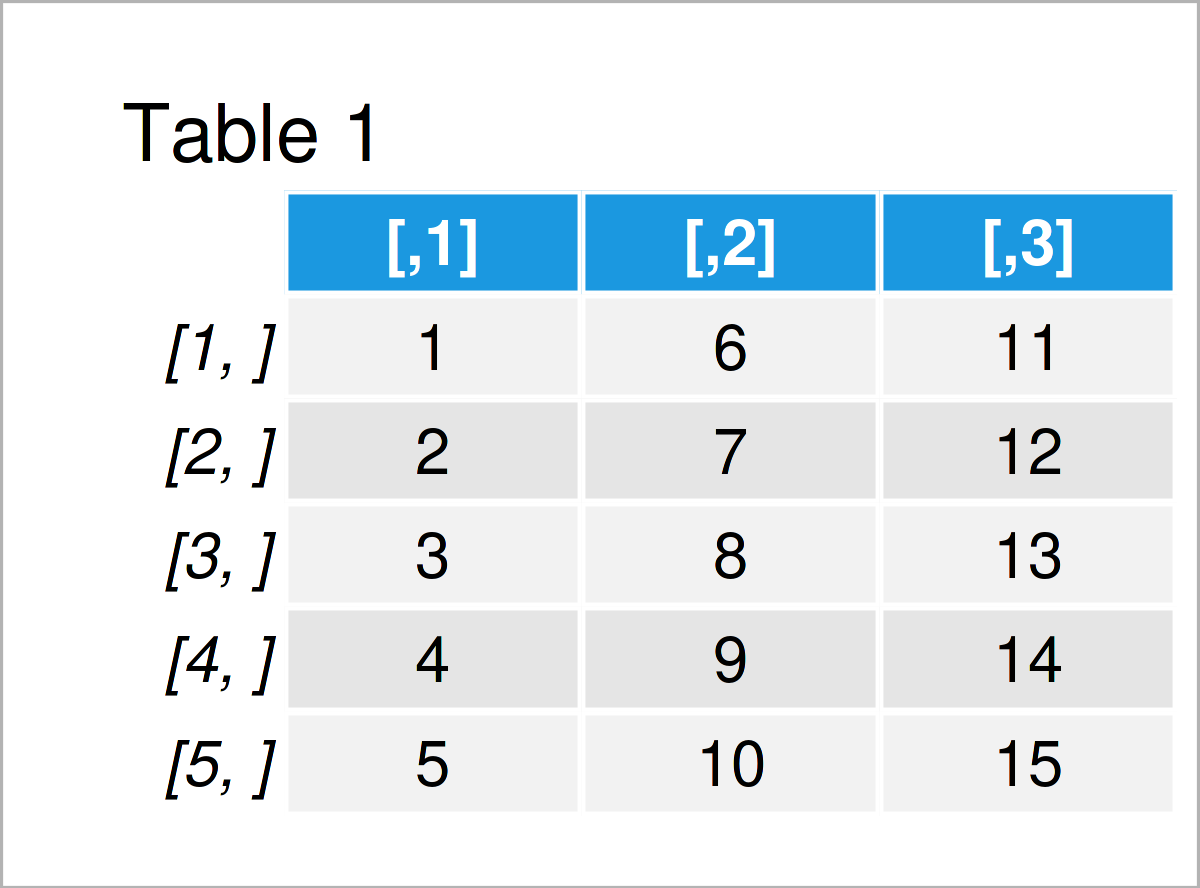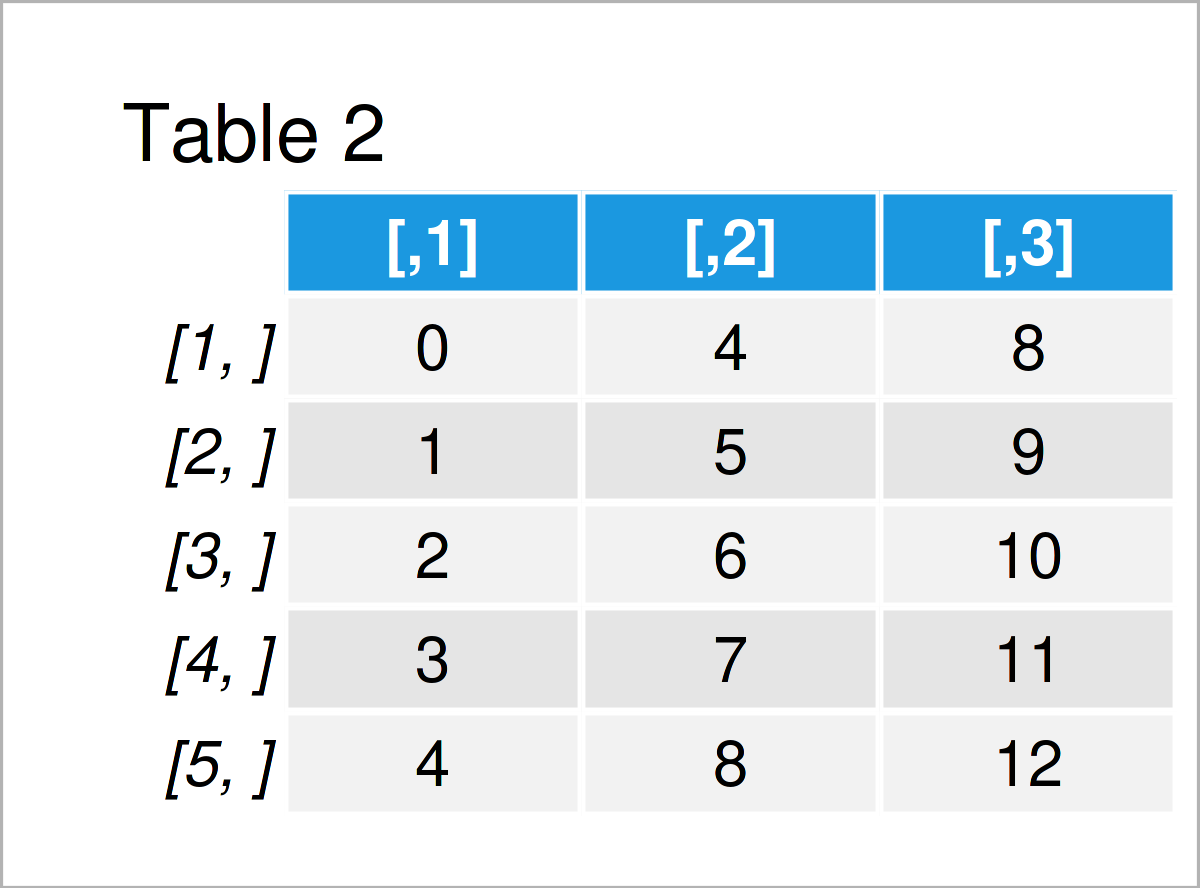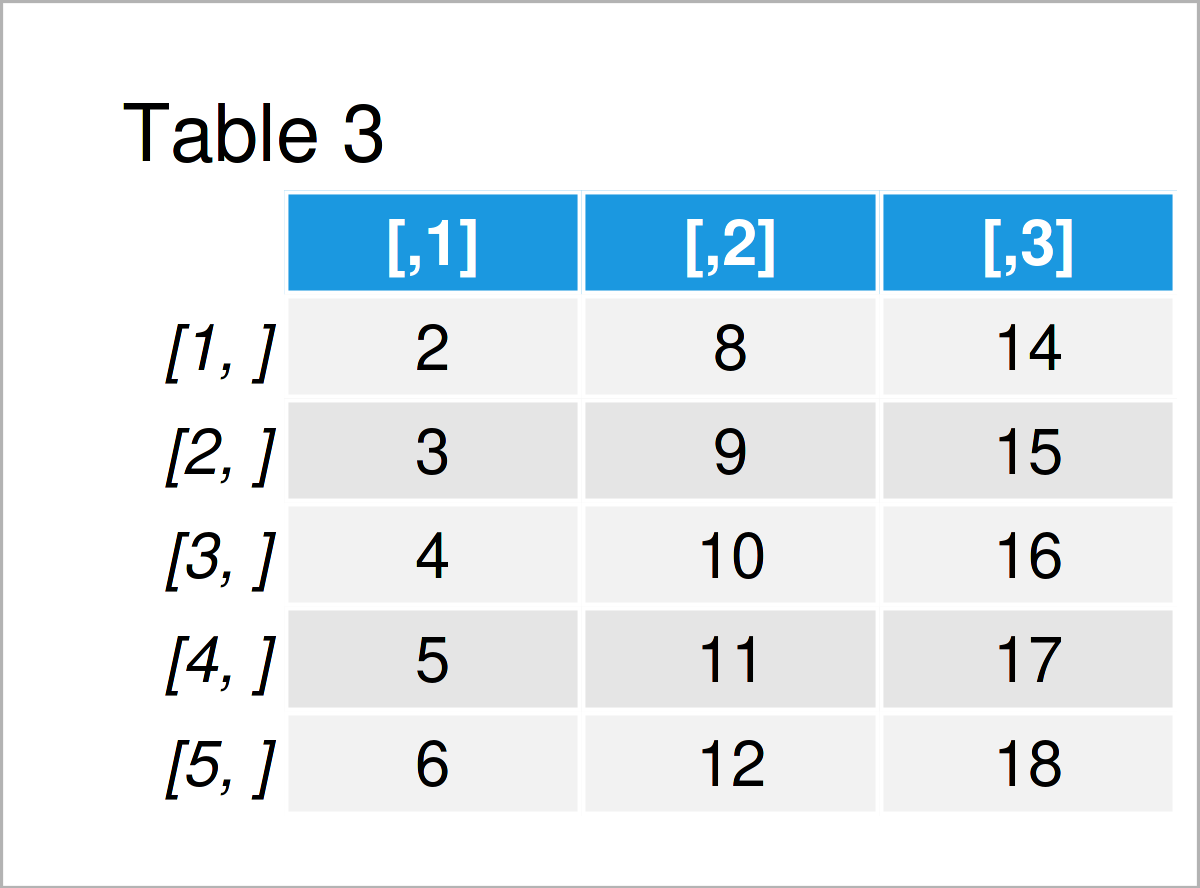How to Subtract / Add a Vector from / to Each Row of a Matrix in R (2 Examples)
In this article, you’ll learn how to subtract or add a constant vector from each row of a matrix in the R programming language.
The tutorial will consist of two examples for the subtraction or addition of the values in a vector from each row of a matrix. More precisely, the page looks as follows:
Here’s how to do it.
Creation of Example Data
We’ll use the following data as basement for this R programming tutorial:
my_mat <- matrix(1:15, ncol = 3) # Create example matrix my_mat # Print example matrix

Table 1 shows the structure of our example data: It consists of five rows and three columns.
Next, we also have to create a vector object that we can subtract and add from / to the cells of our data set:
my_vec <- 1:3 # Create example vector my_vec # Print example vector # [1] 1 2 3
Our vector contains the values 1, 2, and 3.
Example 1: Subtract Vector from Each Row of Matrix Using sweep() Function
Example 1 explains how to subtract constant values from every row of a matrix in R.
For this task, we can use the sweep function as explained below:
my_mat_new1 <- sweep(my_mat, # Apply sweep function 2, my_vec) my_mat_new1 # Return updated matrix

Table 2 illustrates the output of the previous R programming syntax: We have created a new matrix object where our example vector has been subtracted from our example matrix.
Example 2: Add Vector to Each Row of Matrix Using sweep() Function
The following syntax demonstrates how to add values in a vector to each row of a matrix or data frame.
Again, we can use the sweep function. However, this time we have to specify the FUN argument to be equal to “+”.
my_mat_new2 <- sweep(my_mat, # Apply sweep function 2, my_vec, FUN = "+") my_mat_new2 # Return updated matrix

In Table 3 it is shown that we have created another output matrix where the constant numbers in our vector have been added to the values in our input matrix.
Video, Further Resources & Summary
In case you need further info on the examples of this tutorial, you might want to have a look at the following video on my YouTube channel. In the video, I’m explaining the R programming syntax of the present article:
In addition to the video, you might want to have a look at some of the related tutorials on this website.
- Return Column Name of Largest Value for Each Row
- Remove Row & Column Names from Matrix
- Add & Subtract Months & Years to/from Date Object
- Add New Row to Data Frame in R
- Divide Each Row of Matrix & Data Frame by Vector Elements
- R Programming Language
In this article, I have shown how to subtract or add a vector from each row of a matrix object in the R programming language. Let me know in the comments section below, in case you have further questions.






